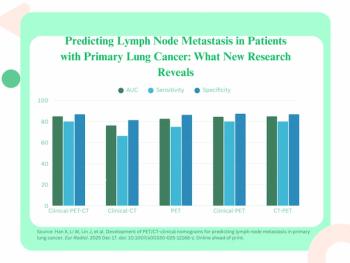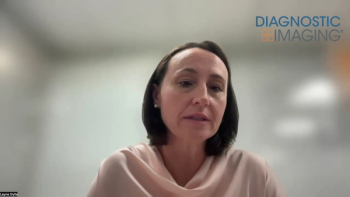
Presenter asserts serum creatinine alone can’t assess kidney function
While most physicians rely on serum creatinine levels to determine kidney function, it’s not the most reliable indicator, according to a nephrologist who presented at the International Society for Computed Tomography on May 18. Instead, he suggested providers look at the estimated glomerular filtration rate (eGFR). In acutely ill patients in particular look at the changing serum creatinine (sCR) levels and not the specific values or specific eGFRs, he said.
While most physicians rely on serum creatinine levels to determine kidney function, it’s not the most reliable indicator, according to a nephrologist who presented at the International Society for Computed Tomography on May 18. Instead, he suggested providers look at the estimated glomerular filtration rate (eGFR). In acutely ill patients in particular look at the changing serum creatinine (sCR) levels and not the specific values or specific eGFRs, he said.
It’s important to screen patients prior to getting a contrast-enhanced CT to determine whether they are at risk for acute kidney injury, previously known as acute kidney failure. Acute kidney injury is defined as an abrupt loss of kidney function, usually over days, marked by changing sCR. Contrast administration can exacerbate acute kidney injury.
Dr. Steven D. Weisbord, an assistant professor of medicine in the renal section at VA Pittsburgh Healthcare System, suggests screening patients’ sCR if they have one or more of the following:
- Known renal insufficiency
- Diabetes mellitus
- Heart failure
- History of proteinuria
- Advanced age (the number is subjective but 65 is a common one)
- Hypertension
- Nephrotoxic drug use
- History of kidney problem after radiocontrast
- Advanced liver disease
- A solitary kidney
A better indication of kidney function, however, is eGFR. For instance, two patients can have the same sCr of 1.5, leading to a misinterpretation, while their eGFRs are 59 mL/min and 36 mL/min.
“Even patients with serum creatinine of 1.2 can have abnormal eGFR,” he said. “Patients can have normal serum creatinine levels and eGFRs that are very abnormal.”
Weisbord cited a study that appeared five years ago and illustrates a pronounced difference in women between sCr and eGFR. The women had sCrs of 0.9 or 1 and eGFRs that put them at the stage III chronic kidney disease, which is an eGFR of 30 to 60 (J Am Soc Nephrol 2005;16:2439-2448). In another example, women with sCr of 1.6 had eGFRs of less than 30, which is stage IV chronic kidney disease.
“Serum creatinine is not a good assessment of what the patient’s renal function is,” he said.
Newsletter
Stay at the forefront of radiology with the Diagnostic Imaging newsletter, delivering the latest news, clinical insights, and imaging advancements for today’s radiologists.




























